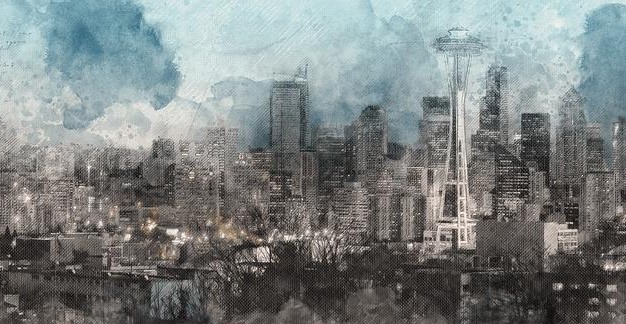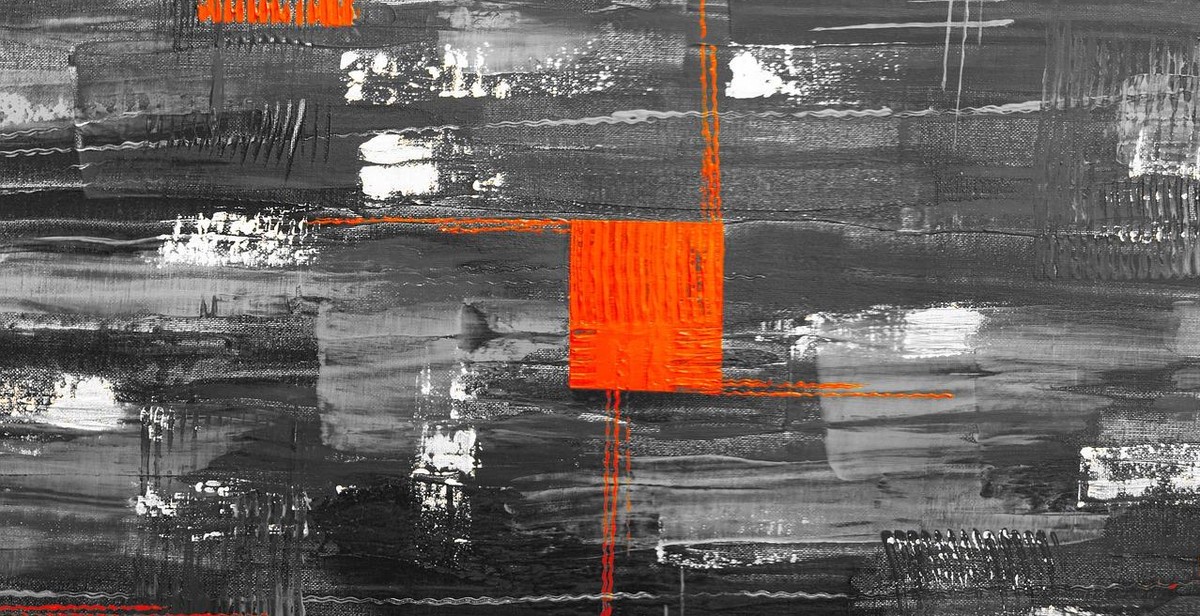How to Paint a Landscape: Techniques for Capturing the Beauty of Nature on Canvas
Painting landscapes can be a beautiful and rewarding experience for any artist. Whether you are a beginner or an experienced painter, capturing the essence of nature on canvas can be a challenging but fulfilling journey. However, it can be overwhelming to know where to start or how to approach painting a landscape.
Personal Experience
As an artist with over 10 years of experience in painting landscapes, I have learned various techniques and tips that have helped me create stunning and realistic paintings. I have also faced challenges along the way and have had to learn from my mistakes. Through this article, I hope to share my personal experience with you and provide you with the necessary tools to create your own breathtaking landscape paintings.
Techniques and Tips
In this article, we will cover various techniques and tips for painting landscapes, including:
- Choosing the right materials
- Composition and perspective
- Color theory and mixing
- Brushwork and texture
- Light and shadow
By following these techniques and tips, you will be able to create stunning landscape paintings that capture the beauty of nature.

Choosing the Right Materials
When it comes to painting a landscape, choosing the right materials is essential to achieving the desired results. Here are some tips on selecting the right canvas, paints, brushes, palette knives, easel, and other tools:
Canvas and Paints
The type of canvas you choose can have a significant impact on the final outcome of your painting. A stretched canvas is a popular choice for its durability and ease of use. When it comes to paints, it’s best to opt for high-quality artist-grade paints that offer a wide range of colors and pigments.
- Choose a stretched canvas for durability and ease of use.
- Opt for high-quality artist-grade paints for a wide range of colors and pigments.
Brushes and Palette Knives
The right brushes and palette knives can help you achieve the desired texture and depth in your landscape painting. Natural hair brushes are ideal for oil painting, while synthetic brushes are better suited for acrylics. Palette knives are great for creating impasto textures and adding details to your painting.
- Use natural hair brushes for oil painting and synthetic brushes for acrylics.
- Palette knives are great for creating impasto textures and adding details to your painting.
Easel and Other Tools
An easel is a must-have tool for any landscape painter. It provides a stable surface for your canvas and allows you to adjust the angle and height of your painting. Other essential tools include a palette, paint thinner, and a rag for cleaning your brushes.
- Invest in a sturdy easel for a stable painting surface.
- Keep a palette, paint thinner, and a rag on hand for easy clean-up.
| Canvas and Paints | Brushes and Palette Knives | Easel and Other Tools |
|---|---|---|
| Stretched canvas | Natural hair brushes for oil painting and synthetic brushes for acrylics | Sturdy easel |
| High-quality artist-grade paints | Palette knives for creating impasto textures | Palette for mixing paints, paint thinner, and a rag |
Preparing the Canvas
Before you can begin painting a landscape, you need to prepare your canvas. This involves two important steps: stretching and priming.
Stretching the Canvas
The first step in preparing your canvas is stretching it. This is important because it ensures that your canvas is tight and smooth, which makes it easier to paint on and prevents any wrinkles or creases from forming.
You can either buy pre-stretched canvases or stretch your own. If you choose to stretch your own canvas, you will need to purchase canvas fabric, stretcher bars, and a staple gun.
To stretch your canvas, follow these steps:
- Assemble your stretcher bars to create a frame that is slightly larger than your canvas fabric.
- Lay your canvas fabric over the frame, making sure it is centered.
- Starting in the center of one side, staple the canvas to the frame. Repeat on the opposite side, pulling the canvas tight as you staple.
- Move to the other two sides and repeat the process, again pulling the canvas tight as you staple.
- Trim any excess canvas fabric.
Priming the Canvas
Once your canvas is stretched, it’s time to prime it. Priming your canvas creates a smooth, even surface that is ready for painting.
You can purchase pre-primed canvases or prime your own. To prime your canvas, you will need gesso, a paintbrush, and a palette knife.
Follow these steps to prime your canvas:
- Squeeze some gesso onto your palette knife.
- Using your paintbrush, spread the gesso evenly over your canvas, making sure to cover the entire surface.
- Let the gesso dry completely before painting on your canvas.
By stretching and priming your canvas, you’ll ensure that your painting looks its best and lasts for years to come.

Sketching the Landscape
Before starting to paint a landscape, it is essential to sketch the composition. Sketching is a critical step as it helps to plan the composition and determine the placement of the elements in the painting. Here are some tips to sketch the landscape:
Choosing the Composition
Choose an interesting composition that captures the essence of the landscape. A good composition should have a focal point that draws the viewer’s attention and leads the eye through the painting. Consider the rule of thirds when selecting the composition. Divide the canvas into thirds horizontally and vertically and place the elements along the lines or at the intersections.
Blocking in the Basic Shapes
Once the composition is chosen, start by blocking in the basic shapes. This step involves breaking down the landscape into simple shapes such as squares, circles, and triangles. Use light pencil strokes to sketch the shapes on the canvas. This technique helps to establish the proportions and perspective of the landscape.
It is important to keep the sketch loose and not worry about the details at this stage. Focus on capturing the overall shape and form of the landscape. The sketch should serve as a guide for the painting and not a finished artwork.
Sketching is an essential part of painting a landscape. It helps to plan the composition and establish the basic shapes of the elements in the painting. Following these tips will help to create a strong foundation for the painting and capture the beauty of nature on canvas.

Painting Techniques for Capturing the Beauty of Nature on Canvas
When it comes to painting a landscape, capturing the beauty of nature on canvas requires a combination of skills, techniques, and creativity. Here are some essential painting techniques that you can use to create a stunning landscape painting:
Working with Colors
Colors are essential in creating a landscape painting. The right combination of colors can make a painting come alive. When choosing colors for your landscape painting, consider the mood you want to convey. For example, warm colors like red, orange, and yellow can create a sunny and cheerful mood, while cool colors like blue and green can create a calm and peaceful mood.
Mixing and Blending Colors
Mixing and blending colors is an essential technique in painting a landscape. It allows you to create different shades and tones that can add depth and dimension to your painting. To mix colors, use a palette knife or brush to blend the colors together. Start with the lightest color and gradually add darker colors until you achieve the desired shade.
Creating Depth and Texture
Creating depth and texture is an essential technique in landscape painting. It allows you to create the illusion of distance and make your painting more realistic. To create depth, use lighter colors for objects that are farther away and darker colors for objects that are closer. To create texture, use a variety of brushes to create different strokes and patterns.
| Technique | Description |
|---|---|
| Impressionism | A style of painting that emphasizes the use of light and color to capture the impression of a landscape |
| Realism | A style of painting that aims to create a realistic representation of a landscape |
| Pointillism | A technique that uses small dots of color to create a painting |
By using these painting techniques, you can create a beautiful landscape painting that captures the beauty of nature on canvas.
Adding Final Touches
Once you have completed the initial stages of painting a landscape, it’s time to add the final touches. This is where you refine the details and add depth to your painting. Here are some techniques for enhancing the highlights and shadows of your landscape:
Refining the Details
Refining the details of your landscape painting is crucial to capturing the beauty of nature. This is where you add the finishing touches that bring your painting to life. Some techniques for refining the details include:
- Using a smaller brush to add finer details such as tree branches, leaves, and grass blades
- Adding texture to the foreground by using a palette knife to create the appearance of rocks or other natural elements
- Adding highlights and shadows to create depth and dimension in your painting
Enhancing the Highlights and Shadows
Enhancing the highlights and shadows of your landscape painting is essential to creating a realistic depiction of nature. Here are some techniques for enhancing the highlights and shadows:
- Using a lighter color to add highlights to areas where the sun hits the landscape, such as the tops of trees and the edges of rocks
- Using a darker color to create shadows in areas where the sun doesn’t hit, such as the underside of trees and the base of rocks
- Gradually building up the highlights and shadows to create a sense of depth and contrast in your painting
By refining the details and enhancing the highlights and shadows of your landscape painting, you can create a stunning work of art that captures the beauty of nature on canvas.

Conclusion
In conclusion, painting landscapes is a wonderful way to express your creativity and capture the beauty of nature on canvas. By following the techniques outlined in this article, you can create stunning paintings that evoke the essence of the great outdoors.
Remember these key tips:
- Take the time to carefully observe your subject
- Choose the right materials for your painting
- Experiment with different painting techniques to find what works best for you
- Use light and shadow to create depth and dimension in your painting
- Don’t be afraid to make mistakes – they can often lead to unexpected and beautiful results
Remember, painting is a journey and it takes time and practice to develop your skills. Don’t be discouraged if your first attempts don’t turn out as you hoped. Keep practicing and experimenting, and you’ll soon find your own unique style and approach to painting landscapes.
Ready to get started?
Grab your paints and brushes, head outside, and start capturing the beauty of nature on canvas. Whether you’re a seasoned artist or a beginner, painting landscapes is a rewarding and fulfilling experience that will bring you closer to the natural world.
